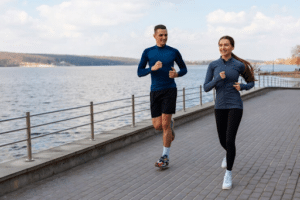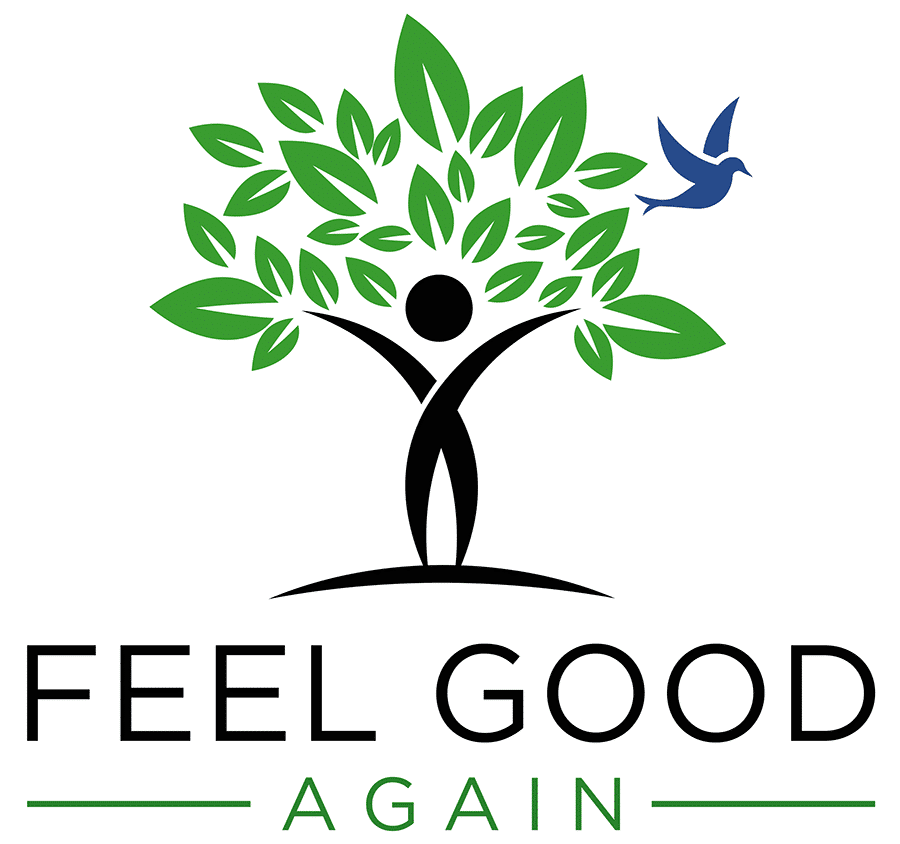Exercise More, Live Longer: Unpacking the Latest Findings on Physical Activity and Longevity
Are you looking to add more candles to your birthday cake? A groundbreaking study just might hold the key to a longer, healthier life, and it’s all about exercise. But how much exercise do we really need to extend our lifespan? Let’s dive into the exciting findings from a recent study published in the journal Circulation and explore how we can put these insights into action.1
The Goldilocks Zone of Exercise
We’ve long known that exercise is good for us, but the “how much” part has always been a bit hazy. The 2018 physical activity guidelines suggested 150-300 minutes of moderate or 75-150 minutes of vigorous exercise per week.2 However, this new study, analyzing data from 116,221 adults over 30 years, suggests there’s more to the story.1
Moderate vs. Vigorous: What’s Your Style?
First things first, let’s define our terms. Moderate activities include walking, weightlifting, and lower-intensity exercises, while vigorous exercises are things like running, bicycling, and swimming. The study found that working out 2-4 times more than these recommended amounts significantly lowers the risk of death, especially from cardiovascular diseases. Your longevity is dependent on exercise.
Maximize the Minutes
Here’s the fascinating part: Adults engaging in 300-599 minutes of moderate or 150-299 minutes of vigorous exercise weekly saw the most benefits. We’re talking about a 26-31% lower risk of all-cause mortality and a 28-38% lower risk of dying from heart diseases. Even non-cardiovascular death risks dropped by 25-27%. The length and intensity matters for expanding your healthy lifespan and longevity.

Mix It Up for Maximum Benefits
The study highlights a crucial point: combining moderate and vigorous activities brings the greatest rewards. Hitting medium to high levels of both exercise types can slash mortality risks by 35-42%. Even if you’re currently under-exercising, modest increases can make a significant difference, reducing cardiovascular mortality by 22-31%.
Every Little Bit Counts
Interestingly, even short, sporadic bursts of vigorous activity, like a quick sprint or rapid stair climbing, are associated with lower cancer risks. This insight is especially handy for those who struggle to find time for longer workout sessions.
Age Is Just a Number
Whether you’re 20 or 60, the impact of physical activity remains consistent. Older adults shouldn’t shy away from vigorous exercises; in fact, they’re just as beneficial as moderate activities for this age group. Results of 13 studies describing eight different cohorts suggest that regular physical activity is associated with an increase of life expectancy by 0.4 to 6.9 years.3
No Fear of High Intensity
For those worried about the risks of high-intensity exercises, the study offers reassurance. While there’s a need for further research, current findings suggest that long-term vigorous physical activities don’t harm cardiovascular health.
Actionable Steps: Making It Work for You
- Find Your Fit: Choose activities you enjoy. Mix moderate and vigorous exercises to keep things interesting and effective.
- Incremental Increases: If you’re below the recommended activity levels, start small. Add an extra 10-15 minutes to your routine and gradually increase.
- Every Minute Counts: Short on time? Quick bursts of vigorous activity throughout your day can add up and make a difference.
- Consistency is Key: Aim for regularity in your workouts. Consistent exercise beats sporadic high-intensity sessions.
- Listen to Your Body: Always pay attention to how your body feels. Exercise should be challenging but not painful.
- Age-Appropriate Activities: If you’re an older adult, don’t hesitate to mix in some vigorous exercises with your moderate routines.
By embracing these insights and incorporating them into our daily lives, we can all take a step closer to a longer, healthier life. Remember, it’s not just about adding years to your life, but life to your years! Learn more about how functional medicine can impact health and longevity and how small changes can make a big difference at TheFeelGoodAgainInstitute.com
References:
- Lee DH, Rezende LFM, Joh HK, et al. Long-Term Leisure-Time Physical Activity Intensity and All-Cause and Cause-Specific Mortality: A Prospective Cohort of US Adults. Circulation. 2022;146(7):523-534. doi:10.1161/CIRCULATIONAHA.121.058162
- Physical Activity Guidelines Resources. ACSM_CMS. Accessed December 26, 2022. https://www.acsm.org/education-resources/trending-topics-resources/physical-activity-guidelines
- Reimers CD, Knapp G, Reimers AK. Does Physical Activity Increase Life Expectancy? A Review of the Literature. J Aging Res. 2012;2012:243958. doi:10.1155/2012/243958





She is a recognized and award-winning holistic, functional, integrative and anti-aging healthcare practitioner, speaker and author, and has been featured in ABC News, Forbes, WOR Radio and many media outlets to spread the word that you can live younger and healthier at any age.